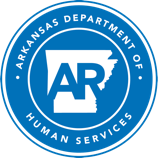Steps and Guiding Principles of Our Work
To be effective, Arkansas prevention planners need to understand complex behavioral health problems within complex environmental contexts.
DAABHS uses the Strategic Prevention Framework developed by the Substance Abuse and Mental Health Services Administration (SAMHSA). The framework is based on years of research and experience throughout the United States.
STEPS OF THE FRAMEWORK

- Assessment
- “What are the problems?”
- We gather data to determine the needs, resources, and causes of community issues.
- Capacity
- “What do we have to work with?”
- We develop knowledge, skills, and resources that community members can use to address issues.
- Planning
- “What should we do, and how should we do it?”
- We determine the best practices, strategies, and action plans to address issues.
- Implementation
- “How do we put our plan into action?”
- We do the work we planned to address the issue.
- Evaluation
- “Is the plan succeeding?”
- We review the implementation process to determine whether adjustments are needed, to record success, and to determine if goals were met.
PRINCIPLES OF THE FRAMEWORK
Two principles must be embedded in every step of the framework.
- Cultural Competence
- All plans and actions must be knowledgeable, respectful, and responsive to the values, lifestyles, and traditions of individuals or organizations engaged in prevention efforts.
- Sustainability
- Planning and actions should be adaptable and build toward long-term results.
DISTINCTIVE FEATURES OF THE FRAMEWORK
SAMSHA points out several advantages of this framework when compared to other strategic planning processes.
IT IS DYNAMIC AND CYCLICAL.
The Strategic Prevention Framework is circular. Planners will return to the assessment step repeatedly over time as community needs and capacity change. Also, the cycle is adaptable to complex, multi-faceted planning. Communities and organizations may work on more than one step at a time if needed.
IT IS DATA-DRIVEN.
The framework steers the collection and review of data to define and prioritize problems and behavioral patterns
IT IS COLLABORATIVE.
The framework requires input and cooperation from diverse community partners.
A Roadmap for Our Prevention Work
A logic model is a brief, logical series of statements that link specific problems to resources, strategies, and activities most likely to address them. In complex prevention projects with limited resources, logic models help stakeholders prioritize and align their efforts.
We support the development of these logic models in communities and grant-supported projects. An example is the logic model for the Partnership for Success project, which aims to curb binge drinking and marijuana use among Arkansas youth.
SAMPLE LOGIC MODEL: PARTNERSHIP FOR SUCCESS
| Problems | |
|---|---|
| Increased binge drinking among youth, with the highest increases among youth ages 16-17 | Increased marijuana use among middle school and high school students ages 12-17 |
| Variables | |
|---|---|
| Easy access to alcohol through retail and at home 45% of youths live in one-parent homes, and the absent parent is inconsistent 85% of youth state that peer pressure is an issue within the community and school | |
| Contributing Factors |
|---|
| Community Risk Factors: availability of drugs and alcohol Family Risk Factors: inconsistent parenting pattern School Risk Factors: low expectations for success Individual Risk Factors: alienation, rebelliousness and friends who engage in problem behaviors |
| Strategies |
|---|
| Implement an evidence-based curriculum program that will help prevent substance use among youth Provide positive mentoring to youth ages 10-19 Target at-risk youth ages 10-19 Conduct positive community activities Provide media education |
| Activities |
|---|
| Collaborate with the school system Establish a youth coalition in the middle school and high school Provide educational workshops about substance use among youth Train teachers, volunteers and staff on areas pertaining to 10 skills: Coping/Social/Life Skills, Communication Skills, Problem Solving, Decision Making, Self-esteem and Goal Setting Post on social media, create fact sheets, and generate radio and TV marketing to educate the community about substance use among youth Conduct conferences and drug-free events within the community Provide youth with positive adult mentors |
| Outcomes |
|---|
| Short-term Increase the relationship between youths, parents and teachers to provide positive support Enhance grades among at-risk students to build their expectations and self-esteem Increase youth decision-making skills, communication skills, coping skills and life skills that will assist them with everyday life and peer pressure. Increase the knowledge within the community concerning substance use among youths. Build youth self-esteem Provide youth with positive adult mentors |
| Intermediate 60% of retailers complying with policies Increase the conversations between parents and youth about alcohol and marijuana use Ongoing media plan implementation Fewer youth will have favorable attitudes towards marijuana use and alcohol use Schools begin to adopt alcohol- and marijuana-free prom and graduation policies |
| Long-Term Decrease binge drinking, and marijuana use among youths by 3% Youth will have increased resiliency to high-risk behaviors More youths will graduate high school without consuming any illegal substances |
Do Your Part to Counter Misinformation
The word “literacy” usually describes the ability to read and write. Media literacy is the ability to identify different types of media and to understand the messages they’re sending.
Youths absorb a huge amount of information from a wider array of sources than their parents did. In addition to TV, radio, newspapers, and magazines, today’s youth use text messages, memes, viral videos, social media, and online video games.
The digital age has made it easy for anyone to create media discussing or portraying the use of drugs and alcohol.
Out of 16 million substance-related posts
on Twitter, YouTube, Instagram, Pinterest, TikTok and Weibo,
76% depicted substance use in a positive light.
(Rutherford et al, 2022)
Parents and community educators can teach youth skills to identify credible sources of information about substance use and help counter misinformation. Rise Above Alcohol and Drugs (RAAD) is our public campaign to support that effort.



